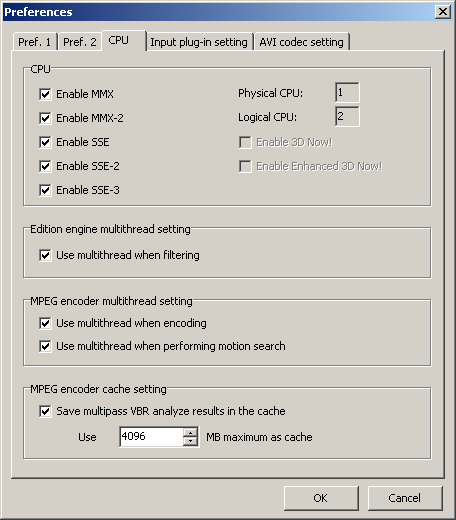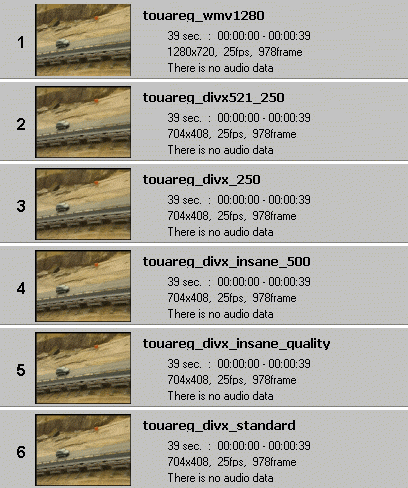Divx 6: High-Resolution Video Saves Space
Conclusion: High Quality At Low Data Rate - HD Functionality
We took advantage of the opportunity to put the Divx 6 codec through its first-ever lab test. The focus was on comparing it with the prior version (5.2.1) and the Windows Media Format (WMV 9). Divx 6 now allows integrating menu structures and subtitles as with MPEG-2 encoded DVDs. The Divx Converter we had at our disposal did not, however, function completely without errors, so we are looking forward to a follow-up version. Divx movies containing a menu structure are only playable on the company's own player, version 6.0 or higher. Windows Media Player 10 ignores the file suffix .divx.

Divx 6 encoding is only fun if you have a powerful CPU: command extensions are supported.
In the new version, Divx Networks promises fast encoding by means of optimized routines. This only applies to the standard encoding process, quality-based 1-pass, in which no optimization of the data stream takes place. The additional speed turns out to be a modest 10 or so percent. On a system equipped with an Intel 3.2 GHz P4 processor and 1 GB memory, real-time encoding of video material in native PAL resolution is possible. Conversion takes somewhat longer if you add on an MP3 audio data stream, though. In any case, encoding speed depends greatly on the type of original material used. Highly filtered and optimized MPEG-2 video from a DVD can be processed faster than DV material from a digital camera.

Excerpt from video format comparison.
The potential for converting high-resolution video into the space-saving Divx format is also intriguing. Although Divx Networks talks about HD video, they are referring to a maximum 1280x720 pixels (720p). We tested out the results of converting video in full HD resolution (1920x1080p) - and the codec crashed. On this point, competitor Microsoft offers a good deal more with its Windows Media Format (WMV 9), namely full HD resolution. Whether or not this will be of interest to customers in the near future will be revealed by the level of HD-DVD sales with this codec.
The Divx 6 codec offers better picture quality in relation to data rate than competitors Microsoft WMV 9 and Apple Quicktime 7 (H.264 basis), obtaining good rate/distortion efficiency. For users who like experimenting, the Divx 6 offers nearly unlimited potential for optimizing data rates and quality levels. In addition to bi-directional encoding and 1- and 2-pass modes, there are lots of controls for influencing video conversion, which can easily result in up to 10 times more computing time.
Another argument in Divx's favor is its pre-existing base of standalone players on the market, which is much larger than that for Microsoft's WMV. It remains to be seen what Divx version 6.X updates will be provided for these players.
Stay on the Cutting Edge
Join the experts who read Tom's Hardware for the inside track on enthusiast PC tech news — and have for over 25 years. We'll send breaking news and in-depth reviews of CPUs, GPUs, AI, maker hardware and more straight to your inbox.
And what about CPU load, particularly with HD video? In our test, load registered nearly 50 percent using a 3.2 GHz Intel P4 and 720p format video. Older hardware simply cannot hold up. With video in PAL or NTSC resolution, CPU load was less than 20%.
Current page: Conclusion: High Quality At Low Data Rate - HD Functionality
Prev Page Imbedding In Studio Plus And Premiere ProMost Popular

